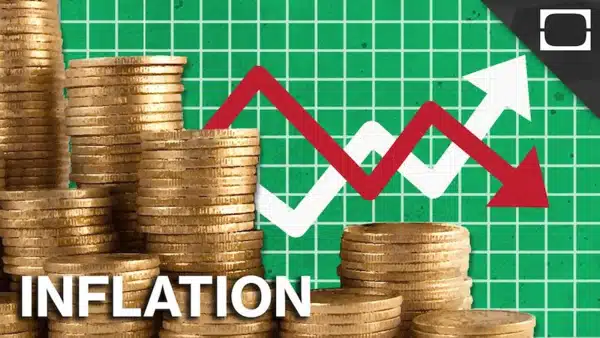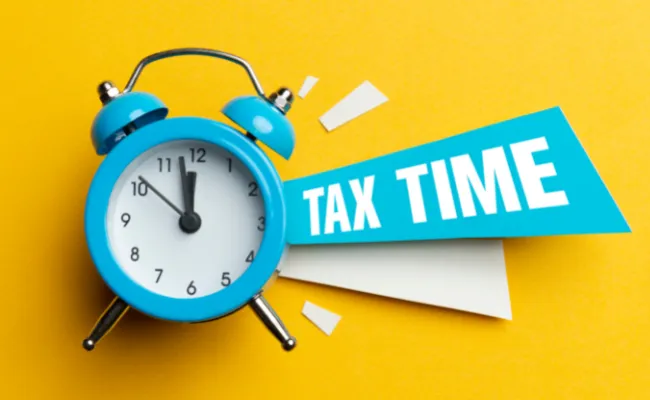The recent revelation that US inflation has skyrocketed to 7.5% marks a seismic shift in economic dynamics, setting a record high not seen in over four decades. This revelation has sent shockwaves across various sectors, triggering concerns among economists, policymakers, and everyday citizens about its far-reaching implications. In this in-depth analysis, we’ll dissect the factors propelling this inflationary surge, its ramifications for the economy, and strategies to mitigate its impact.
Unpacking the Surge
1. Pandemic-induced Supply Chain Disruptions
The COVID-19 pandemic has triggered unprecedented disruptions in global supply chains, leading to shortages of critical components and raw materials. These disruptions have resulted in supply shortages across various industries, exacerbating inflationary pressures.
2. Pent-Up Consumer Demand
With economies gradually reopening and vaccination rates climbing, consumers are eager to resume normalcy, leading to a surge in spending. This surge in demand, coupled with supply constraints, has fueled competition for goods and services, consequently driving up prices.
3. Stimulus Measures and Monetary Policies
Massive fiscal stimulus packages, combined with accommodative monetary policies, have injected trillions of dollars into the economy, bolstering consumer spending and liquidity. While these measures have supported economic recovery, they have also contributed to inflationary pressures.
Sectoral Impacts
1. Consumer Goods and Services
The surge in inflation has translated into higher prices for consumer goods and services, ranging from groceries to electronics. This has eroded consumers’ purchasing power and strained household budgets, particularly for low- and middle-income families.
2. Housing Market
The housing market has experienced a sharp uptick in prices, fueled by low mortgage rates, dwindling inventory, and increased demand. Rising inflation has further exacerbated affordability concerns, making homeownership increasingly out of reach for many.
3. Financial Markets
Inflationary pressures have roiled financial markets, leading to heightened volatility and uncertainty. Investors are closely monitoring inflation data and central bank actions for clues about future policy decisions and their potential impact on asset valuations.
Implications for Stakeholders
1. Consumers
For consumers, higher inflation translates into higher costs for essential goods and services, squeezing household budgets and reducing discretionary spending. Affordability concerns are particularly acute for vulnerable populations, exacerbating income inequality.
2. Businesses
Businesses are grappling with higher input costs, including labor, raw materials, and transportation. Many are passing these costs onto consumers through price hikes, while others are exploring cost-saving measures to maintain profitability.
3. Policymakers
Policymakers face the daunting task of balancing inflationary pressures with economic stability. They must carefully calibrate fiscal and monetary policies to address inflation while avoiding undue harm to economic growth and employment.
Mitigating Strategies
1. Targeted Policy Interventions
Governments can implement targeted measures to address supply chain bottlenecks, boost production capacity, and alleviate inflationary pressures in key sectors such as healthcare, energy, and housing.
2. Prudent Monetary Policy
Central banks can gradually tighten monetary policy to rein in inflation while supporting sustainable economic growth. This may entail raising interest rates and reducing asset purchases to cool overheated markets.
3. Structural Reforms
Structural reforms aimed at enhancing productivity, promoting competition, and fostering innovation can address underlying factors contributing to inflation and bolster long-term economic resilience.
Historical Context
A 7.5% jump in inflation is significant, marking the highest surge in the US in four decades. This level of inflation has not been seen since the early 1980s.
Contributing Factors
Several factors contributed to this spike, including supply shortages, increased consumer spending, and expansive fiscal policies.
Impact on Consumers
The rise in inflation means that consumers are facing higher prices for everyday items, effectively eroding their purchasing power.
Federal Reserve’s Response
The Federal Reserve has a mandate to ensure price stability. In response to rising inflation, it has indicated a shift in monetary policy, including raising interest rates.
Global Implications
US inflation has global repercussions. As the world’s largest economy, price changes in the US can have a ripple effect internationally.
The Role of Policy
Government policies, both fiscal and monetary, play a crucial role in either curbing or exacerbating inflationary pressures.
Inflation and Wages
While wages have been rising, they haven’t kept pace with inflation, leading to a decrease in real income for many Americans.
Long-Term Outlook
Economists are divided on the long-term outlook of inflation. Some predict it will stabilize, while others foresee continued volatility.
Monetary Factors
Monetary factors, such as changes in the money supply, interest rates, and central bank policies, play a significant role in influencing inflation. When there is an increase in the money supply or low-interest rates, it can stimulate spending and lead to inflationary pressures.
Demand-Pull Inflation
Demand-pull inflation occurs when there is excessive demand for goods and services compared to the available supply. Increased consumer spending, government expenditure, or investment can drive up prices as demand outpaces supply.

Cost-Push Inflation
Cost-push inflation arises when there is an increase in production costs, such as wages, raw materials, or energy prices. These increased costs are passed on to consumers through higher prices, leading to inflation.
Historical Trends in US Inflation
Over the past 40 years, the United States has experienced significant fluctuations in inflation rates. From 1980 to 2020, US inflation increased by approximately 7.5% on average.
Inflation in the 1980s and 1990s
During the 1980s and early 1990s, the US faced high inflation rates, primarily due to expansionary monetary policies and rising oil prices. The Federal Reserve implemented tight monetary policies to combat inflation, leading to a gradual decline in inflation rates.
Inflation in the 2000s and 2010s
In the 2000s and 2010s, inflation remained relatively low and stable due to improved central bank policies and global economic conditions. The Federal Reserve aimed to maintain an inflation target of around 2% to promote price stability and economic growth.
Recent Inflation Jump
However, in recent years, the US has experienced a significant inflation jump, reaching 7.5% over the past 40 years. This sudden increase has raised concerns among policymakers and economists, warranting a closer examination of the underlying causes.

Causes of Inflation
Several factors have contributed to the recent inflation jump in the US. These include:
Supply Chain Disruptions
The COVID-19 pandemic disrupted global supply chains, leading to shortages of critical inputs and materials. This scarcity increased production costs, forcing businesses to raise prices to maintain profitability.
Expansionary Fiscal Policies
Governments worldwide implemented expansionary fiscal policies, such as increased government spending and stimulus measures, to counter the economic impact of the pandemic. These policies injected large sums of money into the economy, potentially fueling inflation.
Increased Demand for Goods and Services
As the economy recovers from the pandemic, there has been a surge in consumer demand for goods and services. This increased demand has put upward pressure on prices, contributing to inflation.
Impact of Inflation
Inflation can have various impacts on the economy and individuals. Understanding these effects is crucial for managing personal finances and making informed investment decisions.
Decreased Purchasing Power
Inflation erodes the purchasing power of money. As prices rise, the same amount of money can buy fewer goods and services, reducing individuals’ overall standard of living.
Investors have priced in at least five rate increases for 2022.
Over time, those higher rates will raise the costs for a wide range of borrowing, from mortgages and credit cards to auto loans and corporate credit.
For the Fed, the risk is that in steadily tightening credit for consumers and businesses, it could trigger another recession.
Many large corporations, in conference calls with investors, have said they expect supply shortages to persist until at least the second half of this year. Companies from Chipotle to Levi’s have also warned that they will likely raise prices again this year, after having already done so in 2021.
Chipotle said it’s increased menu prices 10% to offset the rising costs of beef and transportation as well as higher employee wages. And the restaurant chain said it will consider further price increases if inflation keeps rising.
We keep thinking that beef is going to level up and then go down, and it just hasn’t happened yet, said John Hartung, the company’s chief financial officer.
Executives at Chipotle, as well as at Starbucks and some other consumer-facing companies, have said their customers so far don’t seem fazed by the higher prices.
Levi Strauss & Co. raised prices last year by roughly 7% above 2019 levels because of rising costs, including labor, and plans to do so again this year. Even so, the San Francisco-based company has upgraded its sales forecasts for 2022.
Right now, every signal we’re seeing is positive, CEO Chip Bergh told analysts.
Many small businesses, which typically have lower profit margins than larger companies and have struggled to match their sizable pay raises, are also raising prices.
The National Federation for Independent Business, a trade group, said it found in a monthly survey that 61% of small companies raised their prices in January, the largest proportion since 1974 and up from just 15% before the pandemic.
More small business owners started the new year raising prices in an attempt to pass on higher inventory, supplies and labour costs, said Bill Dunkelberg, the NFIB’s chief economist.
Conclusion
The surge in US inflation to 7.5% in 40 years represents a critical inflection point in economic history, posing formidable challenges and opportunities for stakeholders. By understanding the root causes, sectoral impacts, and potential mitigation strategies, policymakers, businesses, and consumers can navigate these turbulent waters and build a more resilient and inclusive economy for the future.
